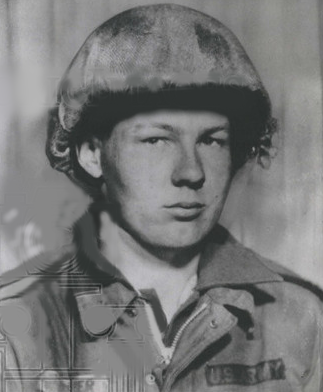Ripley Entertainment Inc.'s Blog, page 269
June 7, 2019
Scientists Discover New Iridescent Dinosaur Bones
Featured in Ripley's Believe It or Not!

This Week
[June 2-8th, 2019] Glittering dinosaur bones, an FBI report on Bigfoot, pink tap water, and the rest of the week’s weird news from Ripley’s Believe It or Not!
Opalized Dinosaur Bones
Recovered from an opal mine in Australia, a set of iridescent dinosaur fossils is proof of a previously undiscovered species. Thanks to the nearby gemstones, the bones fossilized inside the glittering stone. Though the fossils were removed in the 1980s, scientists have only just recently been able to analyze them, determining they belonged to a herd of dinosaurs, not just an individual. Four newly named Fostoria dhimbangunmal, made up the glittering bones. Scientists say these dinos had no claws or sharp teeth but were herbivores that relied on herding for safety.

Robert A. Smith/Australian Opal Centre
FBI Releases Case File On Bigfoot
The FBI periodically releases old reports, case files, and documents to its vault site. They’re usually fairly pedestrian, but one report this week was in regards to Bigfoot. In 1976, they tested 15 unidentified hair and tissue samples to find out if they belonged to Sasquatch. While Bigfoot does have legal protections today, this FBI report seems to have nothing to do with them, the report concludes the hairs were merely from local deer.

10-Mile-Wide Ladybug Swarm
When National Weather Service meteorologists saw something huge pop up on their radar they were puzzled. Local reports confirmed it wasn’t precipitation—the cloud was actually a giant swarm of ladybugs. The mass of flying beetles was hovering a mile above the ground in a swarm that was 10 miles wide. They tracked the cloud south into the night, but then lost track of it.
The large echo showing up on SoCal radar this evening is not precipitation, but actually a cloud of lady bugs termed a “bloom” #CAwx pic.twitter.com/1C0rt0in6z
— NWS San Diego (@NWSSanDiego) June 5, 2019
Casual Safe Cracker
A nearly 50-year-old safe has sat deep in the basement of the Vermillion Heritage Museum in Alberta, Canada, since the building was a hotel in the 1970s. When the hotel closed down, the safe was locked, and it seems no one has been able to find the combination. The museum has called in blacksmiths, the manufacturer, and former employees, but no one was able to crack it until one museum-goer tried his luck this week. Visitor Stephen Mills cracked the code by just guessing. The contents, however, were pretty disappointing, just some old checks, receipts, and a waitress’s notepad.

Pink’s In The Water
Some people love the color pink, but they probably don’t want it in their water. Unfortunately for the town of Coal Grove, Ohio, every city water tap ran pink water this week. Water treatment officials blamed the fabulous water on a malfunctioning pump, and even said it was still safe to drink!

From a similar incident in Onoway, Canada.
CARTOON 06-07-2019
June 6, 2019
The History Of Pink And Blue’s Relationship With Baby Gender
Featured in Ripley's Believe It or Not!

Today, we are in the middle of a strong debate over the issue of gender roles and gendering items, such as toys and clothing for children. Telling little girls they need to play with dolls and wear pink every day may have been popular in the past few decades, but the truth is, pink hasn’t always been a color associated with femininity or girliness at all. Though it seems like the “pink for girls and blue for boys” distinction has been around forever, it really only took hold as recently as the 1980s.
All Babies Are Beautiful… and Wear White Dresses
In the late 1800s, babies were pretty much dressed the same no matter what their gender was. In fact, they all wore white dresses pretty much across the board. The reasoning for this is simple. It’s easier to change a baby’s diaper when they’re wearing a dress than when they’re wearing pants, and fasteners used on pants at the time were difficult for children to master. Also, white clothing can be bleached in order to remove stains. Finally, all babies in a family could be given the same clothing as a hand-me-down. This trend was both practical and cheap, which is probably why it lasted so long.

A baby Robert Ripley in a christening gown (1891).
Pink for Boys, Blue for Girls
Things started to change a bit around the turn of the century. Advertisers, specific department stores, and magazines were all telling new parents the best way to dress their babies. While there wasn’t a specific consensus, many well-respected publications, like Earnshaw’s Infants’ Department in 1918, stated, “The generally accepted rule is pink for the boys, and blue for the girls.” Their reasoning? “Pink, being a more decided and stronger color, is more suitable for the boy, while blue, which is more delicate and dainty, is prettier for the girl.” Yep, it was exactly the opposite a hundred years ago when it came to who wore which color.

How Did Pink Become Girly?
There are plenty of theories behind how and why pink became what we think of today as a color for little girls. For the most part, the change seems to boil down to two causes. One is that in the 1980s it became possible for parents to find out the gender of their children before birth. This became a golden opportunity for advertisers who started selling the idea of gendered clothing to parents with pink for girls and blue for boys. In addition, new parents during this time had been, as children, part of the 1960s movement that saw fewer gendered items for children, and as a deviation from their pasts, wanted to move toward items that celebrated their child’s identity.

From infancy to adulthood, how did pink itself become decidedly feminine? This seemed to occur around the time of the 1950s when advertisers began to sell everything—from shampoo to kitchen appliances to fashion—specifically to housewives and in the color pink. Though women fought back against this gendered stereotype in the 1960s, it returned with a vengeance in the 1980s.
Of course, this doesn’t mean it will go on forever, as people are already leaning away from gendered baby clothes, toys, and other items. After all, there is no proof that boys or girls inherently prefer one color over the other and many feel reinforcing such strong gender roles can stifle personal growth and development. With time, it’s even possible the colors swap again, fade away entirely, or are replaced or joined by other colors entirely.
By Julia Tilford, contributor for Ripleys.com
Source: The History Of Pink And Blue’s Relationship With Baby Gender
Happy 30th Anniversary To Our Grand Prairie Attraction!
Featured in Ripley's Believe It or Not!

Believe It or Not! we’ve been drawing millions of curiosity seekers from across the globe since the opening of our first permanent Odditorium in historic St. Augustine, Florida, back in 1950! We continually add new artifacts, themed galleries, and captivating video stories plus interactive displays to immerse everyone in a fun-filled unbelievable experience.
Did you know that each of our Odditoriums has a unique façade? For instance, our Orlando location looks as if the building is falling into a sinkhole. One of our most iconic façades is our Taj Mahal-inspired building in Grand Prairie, Texas.

“Many of the Ripley building façades depict some disaster in progress,” said Drew Hunter, former Creative Director of Classic Attractions. “Walls are cracking—the building is splitting, sinking, or has fallen over—and sometimes plants or animals have taken over, or an aircraft has hit it, or a T-Rex is rising through the roof. But Grand Prairie is different. It has more in common with the St. Augustine ‘Castle Warren’ location. It is an interesting building which stands on its own to attract guests. No disaster has befallen the structure. It is simply—unique.”
After an unfortunate fire that destroyed what was initially the Wax Museum of the Southwest in Grand Prairie, the Classic Attractions, Inc. management team needed to come up with a façade idea fast. They always knew they wanted a Wax Museum and a Ripley’s Believe It or Not! in the same building. With the location right in front of Interstate 30, the attraction needed to catch the eye of potential customers. The whole process of designing the building and façade was on a super-fast track.


“I, being Creative Director, developed an idea which I presented to our General Manager Bill Phillips and other team members,” said Hunter. “My vision was of rugged, pointed volcanic rocks thrust up at dramatic angles from the Texas prairie. In the midst of those was a sleek mirror glass building which would contain the two attractions. At night the lava rocks around the building perimeter would glow with streaks of lava, and illuminated smoke would float skyward. Well, not surprisingly, that concept was considered a tad too esoteric and was abandoned. Plus, I imagine that the idea of smoke being involved was a little too reminiscent of the terrible fire which destroyed the old wax museum on the same site only a few months before.”

At the time, Bill Phillips, the General Manager of Classic Attractions, Inc., and Hunter, discussed many different ideas for a façade. They hired an architectural firm, who were inspired by the Brighton Pavilion in England, which was built by King George IV and completed in 1823. It was only natural to call the new wax museum The Palace of Wax! Without hesitation, the plan was approved. Hunter came up with the accent colors to embellish and enhance the landmark that continues to define Grand Prairie!

Drew and Charles on the opening day of the Palace of Wax — April 1990.
“One of the most exciting times during construction was the day a huge crane lifted the main onion dome atop the central part of the building. It is fiberglass, with a small door in the rear of the base. While still on the ground in the grassy area in front of the building, I went inside the dome. It was an amazing space, and I loved how my voice resonated inside that strange shape,” said Hunter.
Believe It or Not!, just nine months after the horrific fire, the Odditorium doors opened on June 22, 1989. Following the opening, the horror section of the new Palace of Wax was revealed for the annual Halloween promotion that same year! Finally, the entire wax museum was open to the public in the spring of 1990.

The original invitation to the opening of Ripley’s Believe It or Not!

This is the first brochure. The cover art is of the architect’s rendering, as the building was not completed when the brochure went to press.

Bob Phillips at the ribbon cutting on 22 June 1989.


Charles Edison Chapman (left) was the Assistant Creative Director and constructed most of the costumes for the dozens and dozens of new figures for the Palace of Wax, which sculptor Peter Carsillo (right) created. Here Pete works on the alien from Alien.
Now, in 2019, you can find a total of 5 attractions, including the Palace of Wax and Odditorium!
The state-of-the-art-theater will leave you hanging at the edge of your seat. Here you can let your senses run wild as you experience every bump, drop, and turn with our unimaginable motion simulator. The theater offers two high-impact 3D films.
The Ripley’s Impossible LaseRace challenge will have you breaking a sweat. You’ll need the determination and skill to wiggle your way out of the beams!
Find your way out or lose yourself in our Enchanted Mirror Maze! Embellished with LED lights and infinity mirrors, it’s time to challenge your perception and sense of direction in our enchanting labyrinth.

We want you to discover the strange, the shocking, and the beautiful at Ripley’s Believe It or Not! in Grand Prairie. Enjoy some eye-popping exhibits where you can pose with your favorite celebrity, lose yourself in our spinning vortex tunnel, and even see a shrunken head! The array of weird will leave you spellbound. You’ve found your one-stop family fun on East Palace Parkway in Grand Prairie!
“The entire Grand Prairie attraction—building, shows and all—were labors of love for all concerned,” said Hunter. “We likened it to a phoenix rising from the ashes. Literally, new attractions were springing up from the same slab where the original wax museum had stood. We were so proud of our accomplishments, and remain so. And the best part of all is that, though altered in parts from the way they opened all those decades ago, the attractions still draw in the crowds and provide fascinating entertainment to the young and old… I will always associate the Grand Prairie location with good times, good friends, and amazing adventures. So, CONGRATULATIONS to all the folks at the Grand Prairie location for 30 years of almost unbelievable success!”

Source: Happy 30th Anniversary To Our Grand Prairie Attraction!
CARTOON 06-06-2019
June 5, 2019
CARTOON 06-05-2019
June 4, 2019
Coal Recovered From the Sunken Titanic
Featured in Ripley's Believe It or Not!

When the RMS Titanic struck an iceberg in the North Atlantic in 1912, it took just two and a half hours for the largest ocean vessel in the world to sink, taking the lives of nearly 1,500 people with it. Though 710 passengers and crew survived, they made it away with just their lives. The ship itself would become a mass grave and time capsule lost until it was rediscovered 73 years later.

While survivors of the Titanic arrived in New York aboard the RMS Carpathia three days after the tragedy, initial reports said that the Titanic was being towed to shore at this time. When the error was corrected, and the mass casualties revealed, ships set off immediately to recover what they could from the perilous waters of what would eventually be called Iceberg Alley. The only thing recovered at this time, however, were bodies. A small fleet of ships carrying embalming supplies, clergy, and undertakers recovered hundreds of bodies. The first ships to reach the site were quickly exhausted of their supplies. At the time, health laws only allowed embalmed bodies to be returned to port, so undertakers prioritized embalming first-class passengers, leaving the rest floating in the ocean. Bodies continued to be retrieved by passing ships for months.
Retrieval ships reasoned that they had recovered wealthy passengers because their remains might be needed to settle affairs of their estate, and delivered many of them to an ad hoc morgue set up in a curling rink. The bodies not recovered lasted for about a year in the open sea, held up by their life jackets. Only when the flotation devices rotted away did they sink.
Though a few expeditions to find the wreck of the Titanic were launched in the ’60s and ’70s, it wasn’t until 1985 that a team led by surveyor Robert Ballard located the wreck. Since then, a number of explorers have brought back items from the wreck, including pieces of coal from the engine room that now reside in the Ripley collection.

When the Titanic was put to sea, it was the largest ship afloat, measuring 882 feet long and standing 175 feet tall. To power the largest ship in the world, engineers equipped her with two steam engines and one steam turbine. Combined, they produced 46,000 horsepower, consuming 600 tons of coal a day. All this coal had to be shoveled into furnaces by hand. A total of 176 firemen shoveled around the clock, shoveling enough coal to produce 100 tons of ash that would be jettisoned into the ocean. Reports show that firemen of the time were well paid—£6 a month—but that the exhausting labor resulted in high suicide rates nonetheless.

Titanic‘s boilers
After the Titanic struck the iceberg and began taking on water, the firemen almost immediately found themselves waist deep in freezing water. Fearing the cold water touching the hot boilers would cause an explosion, engineers instructed firemen to stay below decks and vent as much steam as possible. Less than a quarter of the crew survived the sinking, and a few firemen numbered among them.
The coal in the Ripley collection was recovered in 1994, but further souvenir hunting by tourists has caused irreparable damage to the wreck of the Titanic. After one team collapsed the crow’s nest tower while retrieving the ship’s bell, UNESCO put it under world heritage site protections.

CARTOON 06-04-2019
June 3, 2019
The American Defectors Who became North Korean Movie Stars
Featured in Ripley's Believe It or Not!

The four American soldiers who defected to the Democratic People’s Republic of Korea in the 1960s by crossing the Demilitarized Zone (DMZ) likely had no idea they would become film stars in their adopted country.
Army Sergeant Charles Robert Jenkins had a few too many beers and walked from South Korea to its northern neighbor on a freezing cold night in January 1965. Jenkins, 24, was afraid he would be sent to fight in the Vietnam War and believed his act of defiance would get him deported back to America. He was wrong. North Korean authorities kept him in custody for nearly four decades.

Charles Robert Jenkins in 2004, after leaving North Korea.
Jenkins joined three other American GIs—Private James Joseph Dresnok, Private Larry Allen Abshier, and Specialist Jerry Wayne Parrish—who also left their positions in South Korea to cross the DMZ. They shared one room while being constantly monitored by the North Korean government. In his book The Reluctant Communist, Jenkins recalled how he and his fellow Americans felt so hopeless at times that they would do alarming things, such as steal government property or embark on death-defying hikes in the country. They took these chances because “in many ways we felt like we were already dead,” Jenkins wrote.

A very young Abshier
All four went to the Soviet embassy for asylum, but the Soviets returned them to the North Koreans. Jenkins and the other American soldiers taught English, did translation work, and spent up to 11 hours a day studying the teachings of then-leader Kim Il-sung. They also endured physical and mental abuse. However, their scars weren’t visible. They had to appear happy and healthy for the propaganda material that was sent over the DMZ into South Korea. And they eventually became North Korean movie stars.
Dresnok was just 21 years old when he crossed into North Korea through the DMZ. Military life was hard for Dresnok, who enlisted at 17. Depressed about his family life and other personal problems, he impulsively crossed into North Korea. Dresnok became known as “Comrade Joe,” and his voice was blasted on the public address system across the DMZ in a bid to entice American soldiers to come to North Korea, where he promised they would meet attractive women, eat better rations, and have a utopian life. Dresnok was also cast as an evil American in North Korea propaganda films. He and the other defectors were commonly recognized on the streets for their roles in the movies, making them local celebrities.
Jenkins and the other American defectors were cast in a 20-part series of films called Unsung Heroes, which centered on the Korean War. They played evil Western characters. Jenkins was an American warmonger and capitalist who was intent on prolonging the war so U.S. arms manufacturers would profit. Dresnok was the leader of a harsh POW camp, Abshier was a subordinate of two evil Americans, and Parrish was a Northern Irish officer who hated that his country was occupied by the British. Parrish’s character, Lewis, wound up becoming a Communist, and when Parrish appeared in public, he was praised as a hero.
The four American soldiers became North Korean movie staples. Their past indiscretions were forgiven, and they were no longer hated by the North Koreans. Jenkins recalled people calling him by his character’s name in public and even asking for autographs. He worked in the movie business and appeared in dozens of films until 2000. His last film Pueblo centered on the U.S. ship the USS Pueblo, which North Korea captured in 1968 and is currently on display in a Pyongyang museum.

TheUSS Pueblo/CC Laika Ac
In addition to appearing on the big screen, the four American defectors also aided Kim Jong-il by transcribing film dialogues, which were then turned into subtitles for the leader’s private movies.
Abshier, 40, died in 1983 in Pyongyang from a heart attack. Parrish died in the ’90s from kidney failure. Dresnok wed a Romanian woman, who had reportedly been abducted by North Korea, and had two children with her. After her death, he married his third wife, the daughter of a Korean woman and an African diplomat. He stayed in North Korea indefinitely.
Dresnok died in 2016 and considered Pyongyang his home. He told The Guardian in a 2008 interview, “I call it my country because I have been here for 46 years. My life is here.”
As for his acting career, Dresnok added, “To be honest I was quaking in my shoes. I never thought I could be an actor.”
Jenkins married a Japanese woman, whom the North Koreans kidnapped so she could teach their spies Japanese. The couple moved to Japan in the early 2000s when North Korea made an agreement to return many Japanese victims of kidnapping. Jenkins, who went to trial for desertion and was dishonorably discharged, recalled how a doctor sliced off a U.S. Army tattoo he had on his arm and how his life was threatened on multiple occasions. Calling his decision to defect to North Korea “the biggest mistake I ever made,” he lived in Japan with his wife and two daughters until his death at age 77 in 2017.
By Noelle Talmon, contributor for Ripleys.com
Source: The American Defectors Who became North Korean Movie Stars
CARTOON 06-03-2019
Ripley Entertainment Inc.'s Blog
- Ripley Entertainment Inc.'s profile
- 52 followers









